Graphite blocks in
nuclear power stations
Graphite bricks are used in the core of all of the UK's Advanced Gas-Cooled Reactors (AGRs). They act as a moderator, helping to keep the nuclear reaction going, and perform an important safety function.
We're experts in nuclear graphite
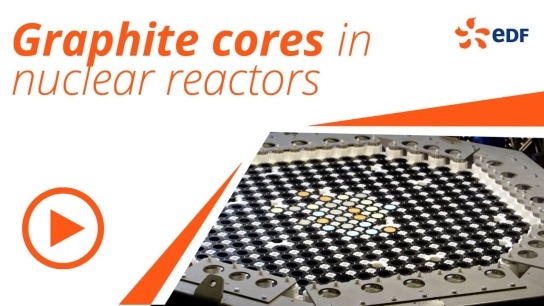
Understanding graphite cores
Dr Jim Reed, Graphite Chief Engineer, talks through the role of the graphite core in our nuclear reactors.
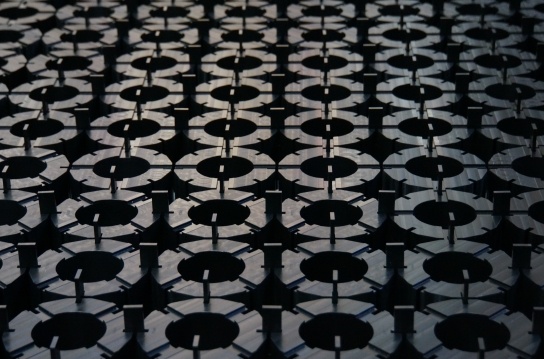
Graphite inspections in nuclear reactors
Find out how and why we inspect the graphite core in our nuclear reactors in this video from Hunterston B.
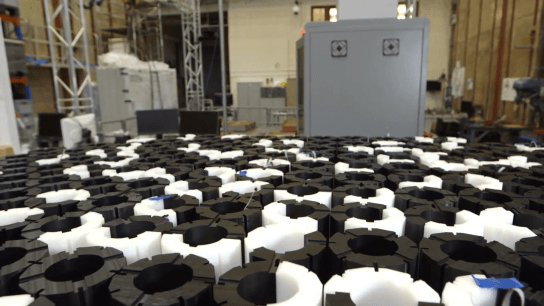
Dynamic control rod drop testing
Watch our test rig in action as we show how control rods would enter the core under extreme conditions.
Advanced Gas-cooled Reactors are
HUGE structures
Each reactor core is 10 metres high, has a diameter of 10 metres and weighs 1400 tonnes, which is equal to 110 double-decker buses.

Each one is made up of around 3,000 fuel bricks measuring 825mm high and 460mm external diameter, bound by a steel restraint and contained within a concrete pressure vessel over three metres thick.
Uranium fuel is inserted into the reactor through channels in the graphite core. Control rods, containing boron, are also inserted through other channels to control the reaction and to shut down the reactor. We have around 80 control rods in each reactor but we only need 12 to shut it down.
What does graphite do in Advanced Gas-cooled Reactors?
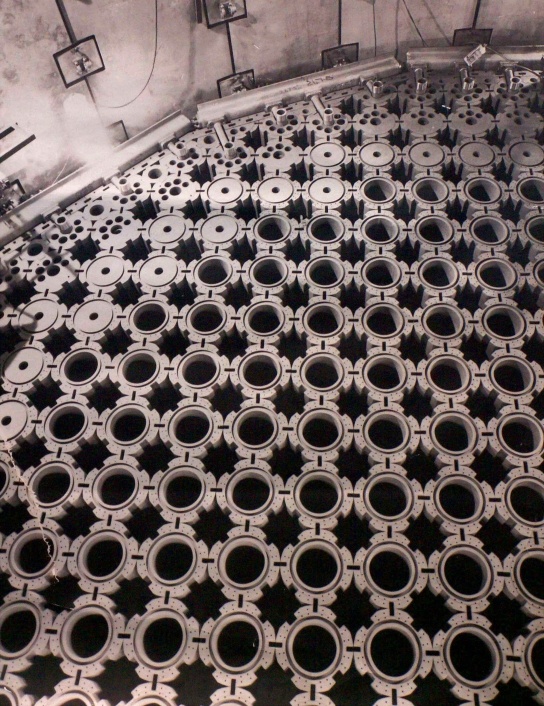
The graphite bricks act as a moderator. They reduce the speed of neutrons and allow a nuclear reaction to be sustained. They also perform an important safety function by providing the structure through which CO2 gas flows to remove heat from the nuclear fuel and the control rods used to shut down the reactor are inserted.
This graphite was always expected to change over time. How it ages is one factor that will determine how long Britain’s AGRs will operate.
EDF has a fleet of 14 Advanced Gas-Cooled Reactors which play a significant part in the UK’s energy production, generating around a sixth of the UK’s electricity and helping achieve the country’s net zero carbon ambitions.
Sizewell B and the new Hinkley Point C are water cooled reactors and do not have graphite cores.
Graphite - what is cracking and weight loss?
We have always known the graphite that makes up the cores of these reactors would change over time. We cannot replace or repair the graphite so we have been working over many years to understand and prepare for these changes.
There are seven stations in the Advanced Gas-cooled Reactor fleet, each with two reactors. The operating lives of our stations have been different. Some have fewer “miles on the clock” meaning that the amount of power they have generated over their lives is less and some have differently designed bricks. A combination of these things will determine how long each of these reactors generates electricity for.
There are two main changes to the graphite that we expect to see as it ages; these are cracking and weight loss.
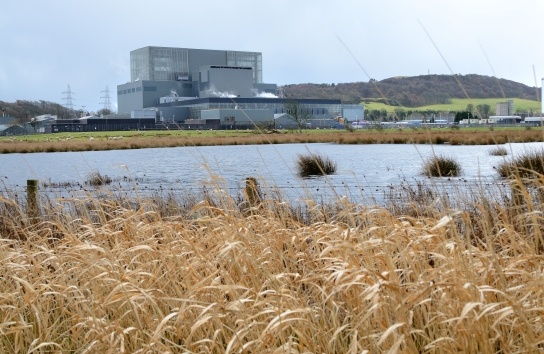
Cracking happens when the stresses in the graphite bricks changes over time. On their own, cracks do not make a reactor unsafe but we need to be able to show that they will not change the shape of the channels where the fuel sits in a way that will stop the reactor from shutting down in an earthquake larger than the UK has ever experienced. We also need to be sure that any fragments that come loose after cracks form do not affect the temperature of the fuel or stop us removing it from the reactor.
Weight loss happens over a long period of time and can affect the ability of the graphite to act as a moderator.
We have a good understanding of both of these developments and they are recognised in our operational safety cases, which are agreed with the UK nuclear safety regulator, the ONR.
Through continual monitoring and regular inspections we have been able to show conclusively the safe shutdown of our reactors during normal operation and in a highly unlikely earthquake. Work is also underway to prove that if any fragments of graphite come loose during the ageing process that they would not be a challenge to continued operation.
Inspections
To monitor the condition of the reactors, we carry out frequent graphite inspections at all our stations, either during statutory outages which take place every three years or during more regular special graphite inspection outages.
We remove the fuel and lower down specialist measuring equipment and cameras to film the inside of the channels. This allows us to see any cracks that have formed and, if they have been observed before, see if they have changed. Each time we monitor we inspect enough channels to give us a good understanding of the state of the core. We also remove samples of graphite, which we send for detailed analysis to confirm the level of weight loss.
The results of these inspections allow us to add to our understanding of graphite behaviour, and confirm that our reactors are ageing as expected. The main purpose of the inspections is to confirm that there is no significant movement of the graphite bricks. They also confirm our assumptions of how the core is ageing and enable us to demonstrate that, even in the event of a major earthquake, there is no significant impact on the core in terms of distortion, and would not present a challenge to the operation of the control rods or other shut-down systems. They also ensure that the weight loss we are finding remains within the limits agreed with the regulator. You can see exactly how we inspect the graphite by watching the “Graphite inspections at Hunterston B” video at the top of this page.
Case study: Hunterston B
Hunterston B, in North Ayrshire, started generating electricity in 1976 and at peak operation made enough electricity to power almost 2 million homes a year. Since it started generating, Hunterston B has produced enough low carbon electricity to power every home in Scotland for 31 years. The last of the station’s two reactors stopped generating electricity on 7 January 2022 when the station moved into the next phase of its operating life – decommissioning.
In 2014, the first crack related to the aging of the graphite was identified in Reactor 4 at Hunterston B. Over the next eight years regular inspections allowed close monitoring of the progression of graphite cracking at the site.
During graphite inspections in March 2018 we identified a slightly higher rate of cracking than expected and kept the reactor offline for more than two years to allow us the time to carry out additional inspections, modelling and analysis and present a safety case, based on new evidence, to the regulator for assessment.
In October 2018 we also decided to carry out graphite inspections on Reactor 4. The results showed that the graphite was ageing as expected but we kept the unit offline while we refreshed the safety case. In August 2019, the ONR gave approval for the unit to return to service for a period of around 4 months, allowing it to reach almost the same power output as Reactor 3. Approval for a further run of 6 months was granted before another round of graphite inspections.
We received approval from the independent regulator, the ONR, to bring Reactor 3 at Hunterston B back online in August 2020. This followed a major, two-year inspection and investment programme to prove that the station can respond safely to a range of earthquake scenarios, far worse than the UK has ever experienced or expects to occur.
The safety case the reactors operated under for the final 12 months of their generating lives showed they could operate and shutdown in all circumstances. This included a 1 in 10,000 year earthquake, larger than the UK as ever experienced.
The work carried out to support the final seismic graphite case for Hunterston B is being used to support safety cases at the other AGR stations around the UK.
All of our work on graphite at Hunterston B has shown a cautionary approach and commitment to nuclear safety that we will adopt across the rest of the AGR fleet as graphite ageing develops.
For all the latest information on Hunterston B, you can visit the station news page.
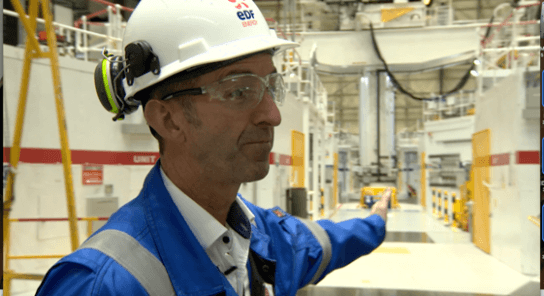
Getting to grips with graphite
As EDF’s Chief Technical Officer Richard Bradfield is responsible for the UK’s 8 operating nuclear power stations. In this blog, Richard reflects on EDF’s graphite challenge.
Research into graphite properties
We have teams of specialists who are experts in graphite and over the past seven years we have invested more than £200m into research with investment ongoing.
Our own expert team also works with specialist academics across the UK including at Strathclyde, Glasgow, Manchester, Oxford, Sussex, Nottingham and Durham universities, the National Nuclear Laboratory and leading UK companies such as Jacobs, WS Atkins and Frazer-Nash.
Videos:
- Dr Jim Reed explains the role of graphite in a nuclear reactor
- Bristol University shaker table experiment
- Dynamic Control Rod Drop Test Rig
- Glasgow University video on software developed to model changes in graphite
- Understanding the graphite core
Media:
- Geographical magazine article on Bristol University work on earthquake impacts on nuclear reactors
- World Nuclear News article on graphite research
Case Studies:
- National Nuclear Laboratory case study on support for operators with graphite cores
- NRG case study on Project Blackstone - supporting the operation of reactors with graphite cores
- Bristol University information on evaluating the earthquake safety of nuclear reactors
- Smith Institute case study on modelling graphite changes
Academic Papers:
Glossary
AGRs - Advanced Gas-Cooled Reactors are the second generation of British gas-cooled reactors. They use graphite as a moderator and are cooled primarily with carbon dioxide, however, nuclear generation does not emit any CO2. The first AGR in commercial operation was Hinkley Point B in 1976.
Moderator - In nuclear engineering, a neutron moderator is a medium that reduces the speed of the nuclear fission reaction; or, in other words, slows down the neutrons to improve the efficiency of the nuclear reaction.
Graphite bricks - The core of the AGR is made up of graphite bricks with channels that contain the fuel elements and control rods.
Fuel elements - AGR fuel consists of stainless steel pins. These pins are made up of small pellets containing uranium, which are built into a graphite sleeve. Seven or eight smaller fuel elements are fixed together vertically to form one large fuel element.
Control rods – These control the reactor power. The graphite core contains channels for the boron steel control rods, which can be raised and lowered to control the reactor power.
Find out more
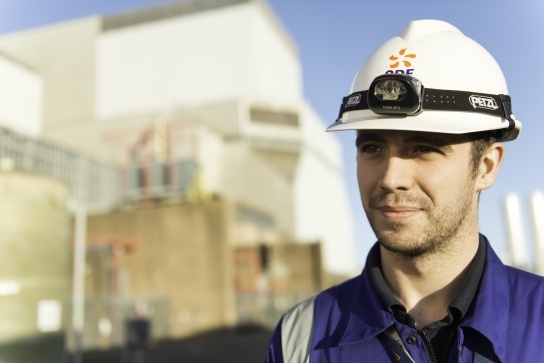
Nuclear lifetime management
EDF's lifetime strategy is to seek life extensions for all its nuclear stations, where it is safe and commercially viable.
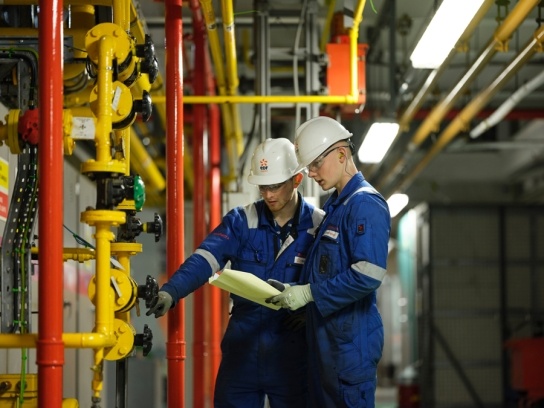
How do you decommission a nuclear power station?
By 2030 all seven of EDF’s AGR nuclear power stations are expected to have ended power generation and be at various stages of decommissioning.
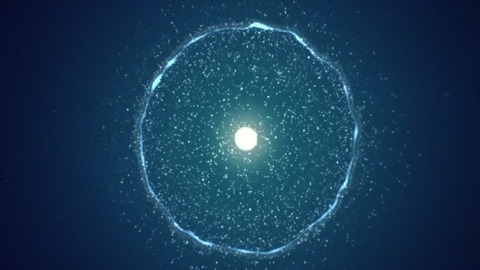
Nuclear power
Nuclear energy is low-carbon, reliable and works whatever the weather. Around 20% of the UK's electricity is generated by our eight nuclear power stations.